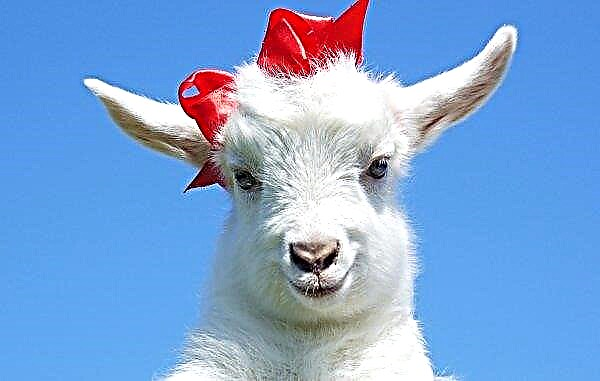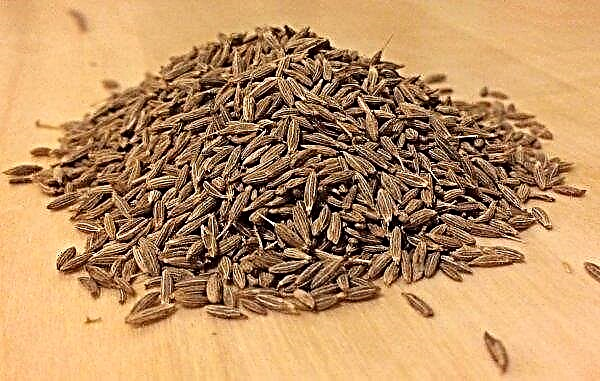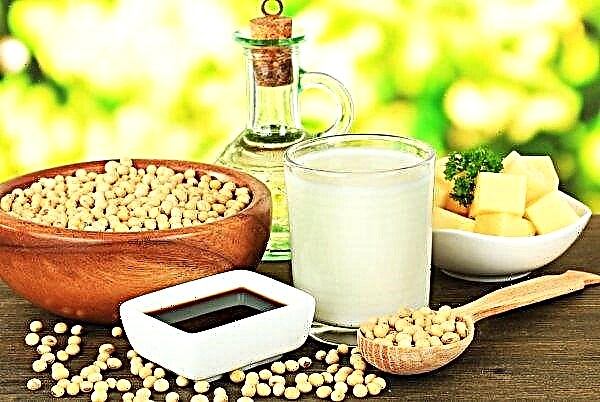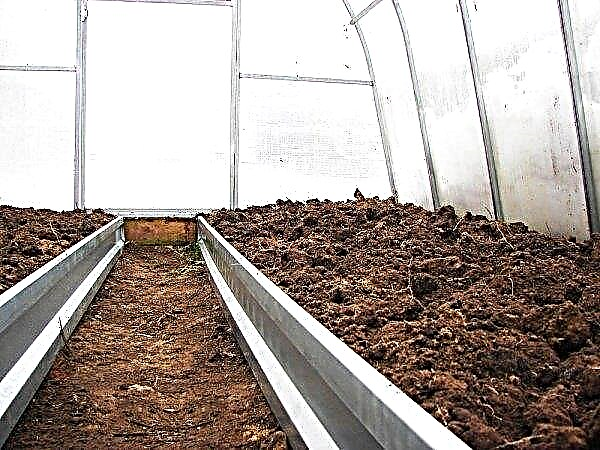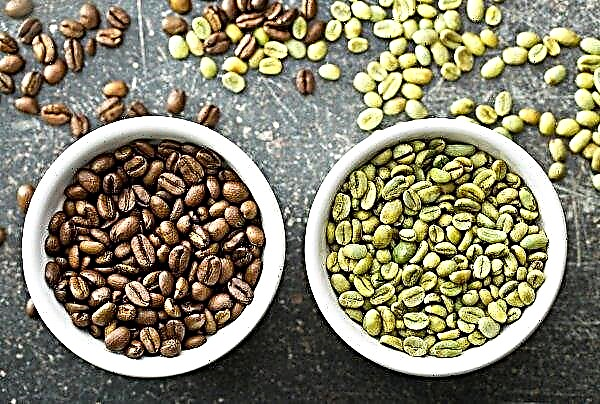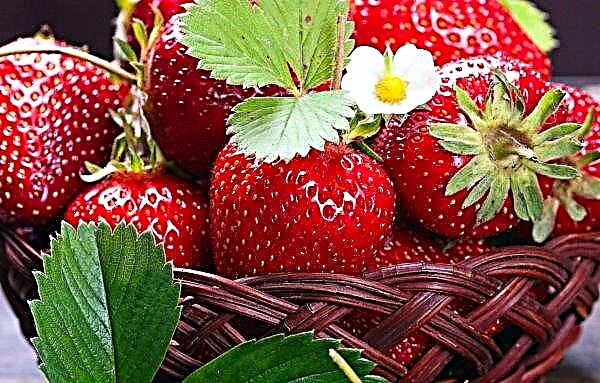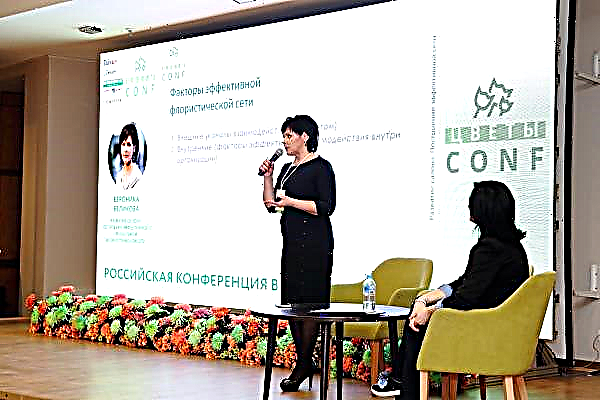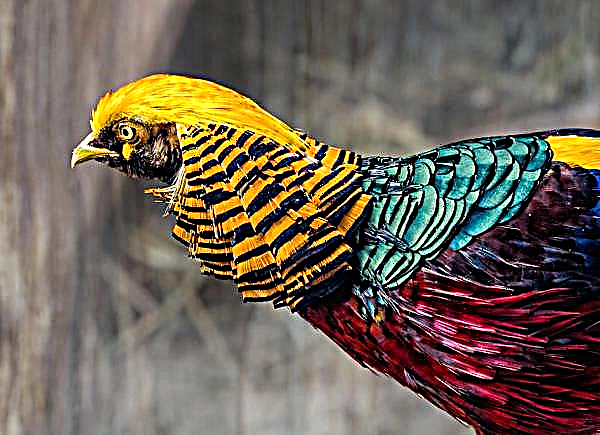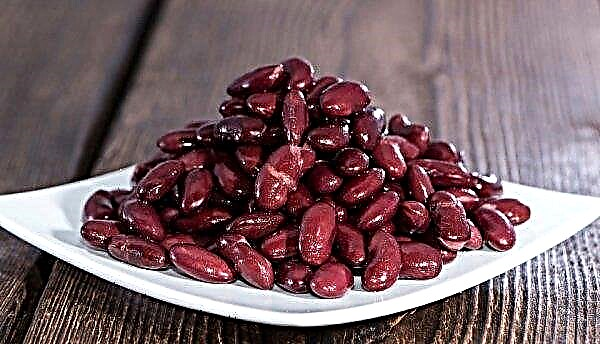Proper nutrition of chickens occupies a key place in the issue of their productivity, therefore, every farmer tries to choose the most balanced diet, both for laying hens and for representatives of the meat industry. Premixes are called to help him in this, and you will now know what you need to know about them and how to use them.
What are premixes for chickens
Premixes are nutrient mixtures of bioactive substances that are uniform in composition, evenly distributed in some food filler:
- bran;
- chopped wheat;
- fodder yeast.
 They can also be contained in feed mixtures, although their share here is very small: on average no more than 1% (about 1 kg per ton). The premix manufacturing process provides for alternating mixing of all components: vitamin, amino acids and filler, and then trace elements salts. The advantages of using additives are many, although such additives are not without certain disadvantages.
They can also be contained in feed mixtures, although their share here is very small: on average no more than 1% (about 1 kg per ton). The premix manufacturing process provides for alternating mixing of all components: vitamin, amino acids and filler, and then trace elements salts. The advantages of using additives are many, although such additives are not without certain disadvantages.Benefits of Feeding
- The positive aspects of introducing biologically active additives into the chicken diet include:
- increased egg production (on average, one chicken gives at least 280 eggs per year);
- reduction of feed costs due to the high nutritional value of premixes (in addition, there is no need to search for additional sources of vitamins and minerals);
- increase the nutritional value of the obtained testicles;
- increase in the reproductive functions of chickens (the number of chickens raised also increases);
- improvement of the body’s defenses, due to which their resistance to viral and catarrhal diseases increases;
- improving the appearance of eggs and the quality of their outer shell;
- reduction in the likelihood of problems with the limbs due to bone weakness and joint deformation;
- prevention of feather loss and skin peeling;
- supporting the chicken body during seasonal molting.
- As for broilers, then biologically active additives:
- significantly increase their daily weight gain;
- reduce feeding time;
- relieve the owner of problems with the skeleton of young animals.
Disadvantages of feeding
- The disadvantages of using ready-made premixes are much smaller than the positive aspects, but you can’t name them insignificant. First of all, farmers include the disadvantages of such nutrition:
- a relatively high cost (with the content of a small herd of chickens, from an economic point of view, such food will be more expensive);
- increased care in calculating the exact dosage of food (it is important to saturate, but not to overfeed the birds);
- low quality of certain types of products and a large number of fakes of well-known companies;
- uniformity, although this is more related to inconvenience for chickens: birds, accustomed to consume a variety of feeds, sometimes do not immediately agree to switch only to these mixtures.
In fact, all these shortcomings may not be noticed if you buy bulk premixes only from trusted suppliers and for a large number of stocks.
Did you know? The mass production of premixes began in the 50-60s of the last century, and the current division of such nutrient mixtures into types (for example, vitamin, therapeutic, complex) dates back to the 70 years of the twentieth century.
Types of premixes and their composition
There are a lot of products under the general name “premixes” on the modern market, but not all of the proposed formulations are suitable specifically for your case. To achieve maximum effectiveness from the use of biologically active additives, it is important to choose their variety correctly. The most famous include:
- complex premixes - combine a wide range of vitamins and minerals, combined with the main filler (for example, crushed wheat);
- vitamin - contain only the most necessary vitamins and nutritional basis, without the addition of mineral compounds;
- mineral - include calcium, iron, phosphorus, zinc and other important compounds mixed only with a filler;
- protein - contain protein products that replenish protein reserves in the chicken body;
- healing - along with the food base, antibiotics are present in the composition, but in a small amount, which helps to strengthen the immunity of chickens and increase the resistance of their body to the most common chicken ailments.
 Always study the composition of the selected product, most often premixes that include:
Always study the composition of the selected product, most often premixes that include:- vitamins A, D3, K, E, H, group B (B1-B6, B12);
- trace elements - iodine, manganese, iron, zinc, selenium, cobalt;
- amino acids - lysine and methionine;
- sometimes macrocells phosphorus and calcium.
- a shell;
- chalk;
- phosphates;
- bone meal.
Important! It is good if the selected composition contains antioxidants that prevent the oxidation of vitamins: for example, Santokhin or butyloxytoluene.
How to choose a quality premix
To choose a good dietary supplement for chickens, decide which goal you are pursuing:
- increase egg production;
- strengthen the health of young animals;
- contribute to mass gain.
So, when feeding hens, formulations with an emphasis on vitamins, minerals or a mixture of them will be appropriate, while it is better to feed representatives of meat breeds with protein formulations and premixes with the presence of:
- organic acids;
- immunoglobulins;
- amino acids;
- essential oils.
 It is more rational for young individuals to give out therapeutic varieties of these products that will help prevent infection by infectious diseases.
It is more rational for young individuals to give out therapeutic varieties of these products that will help prevent infection by infectious diseases.As for the general selection rules, here we can highlight the following important points:
- complete uniformity of composition, without lumps and suspicious particles;
- the absence of a pungent smell and bright color of the product, which indicates the use of chemical compounds during the production of additives;
- packaging integrity and suitable shelf life;
- the fame of a producer who has earned a good reputation among farmers.
Top brands and manufacturers
The most well-known premix suppliers usually produce various product lines, so you can choose an additive for both laying hens and broiler-type poultry. However, this does not mean that both options will be equally high-quality, so it makes sense to consider each group of premixes separately.
For broilers
The main purpose of premixes in this group is to increase the weight of chickens, while reducing the output of conventional feed mixtures. A lot of manufacturers are represented in this segment, but the following are considered the most famous:
- The Purina company and its premix Groer. It contains vitamins A, D, E and 7 minerals, which will be a good addition to the standard grain feed for birds.
- OLKAR company, Miracle additive. Often used as a preventive measure to prevent hypovitaminosis, metabolic disorders and increase the daily weight gain of chickens. In addition to a wide vitamin complex, this product includes zinc, iodine, iron and selenium. Considering the age of the bird, you can purchase either “Start” (for young animals 1–4 weeks old), or the “Finish” series for grown chickens, 5–8 weeks old.
- The Missi company delivers the Missi Start premixes (can be used up to three weeks of age) and Missy growth premixes (applied from three weeks until the moment of slaughter of the bird). This product of Ukrainian origin is a good addition to European formulations, in addition, it is relatively cheaper. Together with this supplement, all the necessary B vitamins, vitamin A, D, as well as mineral compounds and amino acids, such important for the harmonious development of hens at different stages of their life, will be included in the chicken diet.
- Premix "Country Courtyard", developed taking into account the characteristics of the metabolic processes of broiler breeds and their growth rate. In this case, using the composition, you will make up the need for chickens in protein, mineral components and amino acids.
- Zoorost company, Broiler product. Designed to reduce the death of birds by supplying their body with the necessary vitamin-mineral compounds, in particular iron, copper, zinc, manganese, iodine, cobalt, B vitamins (B1-B6, B12), A, D3, E, C. B addition to them, salts and antioxidants are added to the preparation, which reduce the feeding period (by about 7 days). In addition, they are a good prevention of rickets and other diseases caused by problems in the metabolic functions of the body.

- Megamix - Ideal for large poultry farms. The supplement is represented by a vitamin-mineral complex, which increases the general tone of birds and reduces the feeding period. It combines 12 vitamins, 6 mineral compounds, antioxidants and a nutritional base.
- "Accelerate" - Promotes rapid weight gain. The composition of the supplement includes 10 beneficial amino acids, 9 minerals, 13 vitamins and protein in its raw form. Among the positive qualities of the product are reduced broiler feeding time, increased immune forces of their body, normalization of intestinal microflora, reduction in the amount of feed used.
Important! When applying any premix, carefully monitor the status of your broilers. In case of health problems or side effects (for example, diarrhea, feather loss or apathy), it is worth reviewing the diet and temporarily excluding food additives from it.
For layers
To increase the egg production of laying hens, it requires its own set of mineral and vitamin compounds, so the preparations already described will not work. In this case, the most well-known formulations for increasing productivity are the following:
- "Ryabushka" from the company "Agrovit". The drug combined 12 vitamins (A, D3, E, K, B1-B6, B12, H) and 7 minerals (selenium, manganese, cobalt, iodine, zinc, iron, copper), as well as antioxidants. At the same time, there are no growth hormones and dyes here. The general strengthening of the health of the chickens has a positive effect on their egg production, plumage state, and an increase in the palatability of meat.
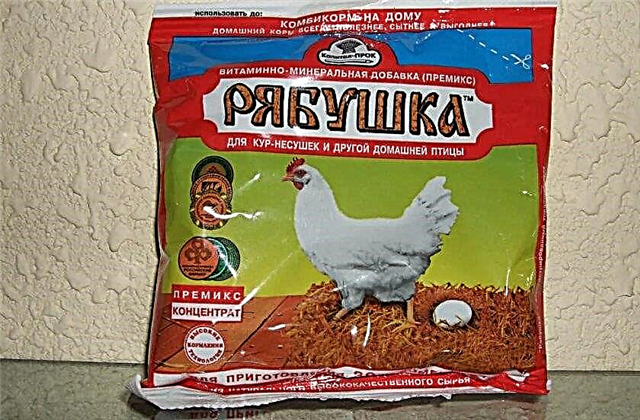
- Felucen. The composition of this premix is almost identical to the composition of the previous one, because all the same 12 vitamins and 7 minerals provide complete nutrition for chickens. Together, they will be useful not only for laying hens, but also for other feathered inhabitants of the farmstead, since they successfully protect the bird from early molting, rickets, cannibalism, dystrophy and feather loss.

- “Lay” from the company “Zoroost”. This premix includes 11 vitamin compounds (A, B2 — B6, B12, D3, K, E, H) and 7 trace elements. There are no antibiotics and GMOs, so the composition can be used at any stage of the growth and development of chickens. The effectiveness of the application of the additive will be noticeable after 1-1.5 weeks of its active use in the diet, and above all, positive changes will be observed in the number of laid eggs (up to 5-6 pieces per week from one chicken).

- Tech Feed from the European manufacturer Trouw Nutrition International. It contains 8 vitamin compounds, as well as minerals such as biotin, niacin, lysine, choline, crude protein, methionine, phosphorus, calcium. This is an excellent option for large farms, where regular use of premixes not only accelerates weight gain, but also significantly increases the hatchability of chicks, while normalizing the digestion of adult birds.
- "Ecovet." The composition is largely identical to the above options, for the most part due to a set of incoming vitamins (A, B1-B6, B12, D3, E, K3) and trace elements. The pharmacological effect of the additive is very similar to the effect of “Miracle” and “Ryabushki”: prolonged use of the premix has a positive effect on the immune system, it improves the digestibility of feed.
Did you know? To fry fried eggs from chicken eggs, the size corresponding to the fried eggs from one ostrich egg, you will have to collect 25 eggs in the chicken coop.
Features of feeding chickens
Since the composition of premixes has certain differences depending on the target group of birds, it is not surprising that the characteristics of feeding each group of birds will differ. Consider the nuances of feeding and approximate standards for the issuance of additives for poultry meat and egg.
Egg direction
Usually, the consumption rates of any premix are indicated by the manufacturer on its packaging, so you should not particularly worry about the exact calculation. The percentage of bioactive product on average is 0.5-1% of the total feed given to the bird throughout the day. That is, 1-10 g of food should account for 5-10 g of premix. If you notice a value of 5-20% on the package, then you have a protein-vitamin supplement, where, in addition to vitamins, protein products are contained:
- yeast;
- meal;
- hydrolysates.
Such products have a different dispensing scheme, although it is usually indicated on the packaging. However, in the case of laying hens, the producer often indicates the recommended amount of premix per head, that is, an average of 0.5-1 g per day for one adult chicken.
However, in the case of laying hens, the producer often indicates the recommended amount of premix per head, that is, an average of 0.5-1 g per day for one adult chicken.
Meat direction
When feeding chickens and adult hens of a broiler direction at each age stage, the norms for dispensing premix will be calculated individually. For example, when calculating the required amount of additives per head, you can focus on the following values:
| Age (in days) and bird weight (in g) | Amount of feed (g) | Amount of premix (in g, taking into account 1% of input) |
| 1 (50) | 12 | 0,1 |
| 5 (115) | 25 | 0,23 |
| 10 (250) | 50 | 0,5 |
| 15 (480) | 75 | 0,8 |
| 20 (750) | 95 | 1,0 |
| 25 (1100) | 115 | 1,2 |
| 30 (1400) | 130 | 1,3 |
| 35 (1800) | 150 | 1,5 |
| 40 (2200) | 170 | 1,7 |
| 45 (2600) | 185 | 1,9 |
Whatever premix for chickens you choose, there are several general rules for using such mixtures. So, when feeding representatives of the broiler direction and laying hens, it is important to remember:
- premixes can not be boiled or boiled, because under the influence of high temperatures all the useful substances in their composition can be destroyed;
- do not stir additives in water, as some components do not dissolve and simply settle on the bottom of the drinkers;
- mixing with food should be carried out gradually, starting with a small amount of food, and then bringing the resulting volume to the desired daily amount;
- supplements begin to be given to chickens from the age of ten, along with the onset of the active growth phase;
- the issuance of premixes should be regular, that is, their presence in the daily diet is mandatory.
 Premixes are a good way to replenish the diet of birds with all the vitamins and minerals they need, especially if the chickens are significantly limited in activity and in green foods. All that is required from the owner is to choose the right composition, calculate the required dosage and regularly give the bird useful additives for it.
Premixes are a good way to replenish the diet of birds with all the vitamins and minerals they need, especially if the chickens are significantly limited in activity and in green foods. All that is required from the owner is to choose the right composition, calculate the required dosage and regularly give the bird useful additives for it.





